Life
Sign up for our newsletter
We summarize the week's scientific breakthroughs every Thursday.
-
 Neuroscience
NeuroscienceFamous brain sketches come to life again as embroideries
A needlework project pays tribute to the iconic drawings of Spanish neuroscientist Santiago Ramón y Cajal.
-
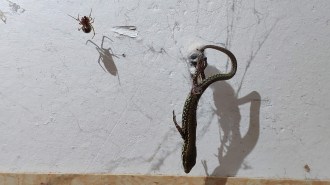 Animals
AnimalsHow a tiny spider uses silk to lift prey 50 times its own weight
Dropping the right silk can haul mice, lizards and other giants up off the ground.
By Susan Milius -
 Paleontology
PaleontologyThis ancient sea reptile had a slicing bite like no other
Right up until 66 million years ago, the sea was a teeming evolutionary laboratory with a small, agile, razor-toothed mosasaur patrolling the waters.
By Jake Buehler -
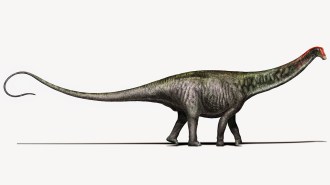 Animals
Animals50 years ago, scientists made the case for a landlubbing Brontosaurus
In 1971, a scientist argued for a landbound Brontosaurus instead of a swampy swimmer. Recent evidence comes from studies of its ancient environment.
-
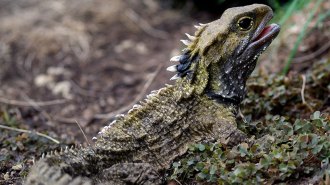 Genetics
GeneticsLizard-like tuatara carry two distinct mitochondrial genomes
Having two mitochondrial genetic instruction books, a first for vertebrates, may help explain tuatara’s unique ability to tolerate cold temperatures.
-
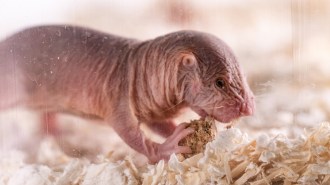 Animals
AnimalsNaked mole-rat colonies speak with unique dialects
Machine learning reveals that these social rodents communicate with distinctive speech patterns that are culturally inherited.
-
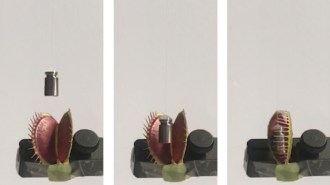 Tech
TechA robot arm toting a Venus flytrap can grab delicate objects
By attaching electrodes to the plant’s leaves, researchers found a way to snap its traps shut on command.
-
 Animals
AnimalsA new orange and black bat species is always ready for Halloween
A new species from the sky islands of Africa’s Nimba Mountains shows bats’ colorful streak.
By Susan Milius -
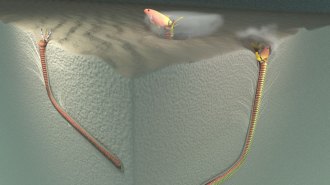 Life
LifeGiant worms may have burrowed into the ancient seafloor to ambush prey
20-million-year-old tunnels unearthed in Taiwan may have been home to creatures that ambushed prey similar to today’s monstrous bobbit worms.
-
 Animals
AnimalsSome bacteria are suffocating sea stars, turning the animals to goo
For years, researchers thought an infectious pathogen was behind sea star wasting disease. Instead, bacteria deplete the starfishes’ oxygen.
-
 Life
LifeMonitor lizards’ huge burrow systems can shelter hundreds of small animals
Two species of Australian monitor lizards dig nests four meters deep. Now scientists reveal that the burrows are home to far more than their creators.
By Jake Buehler -
 Animals
AnimalsSome electric eels coordinate attacks to zap their prey
Electric eels were thought be to solitary hunters, until researchers observed over 100 eels hunting together, releasing coordinated electric attacks on corralled prey.